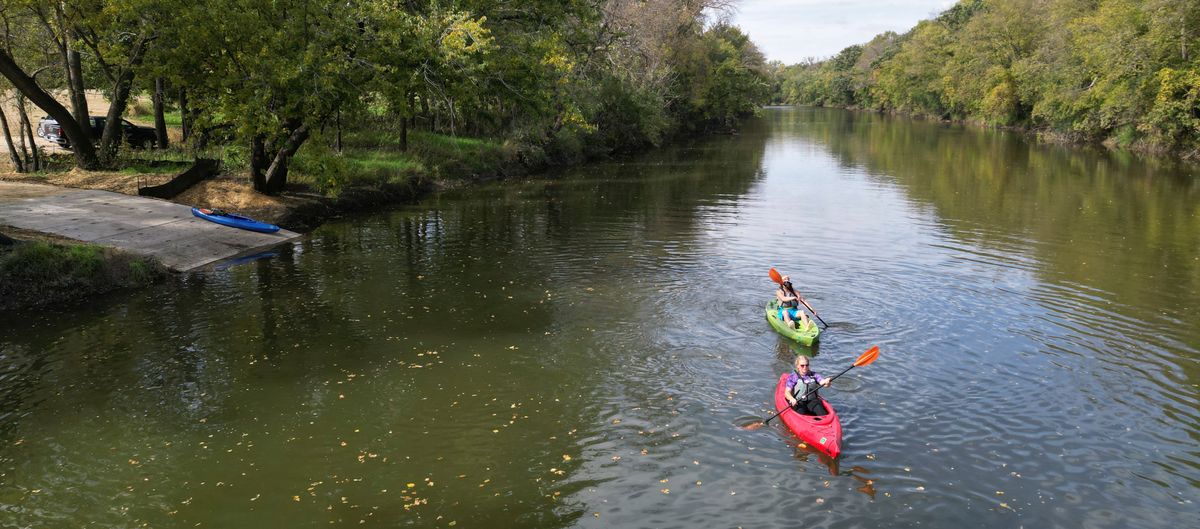Serious water pollution in England up 60%, government says – BBC

Report on Water Pollution Incidents in England and Implications for Sustainable Development Goals
Executive Summary
A 2024 report from the Environment Agency reveals a significant and record-breaking increase in water pollution incidents in England. The data indicates a 60% rise in serious pollution events, highlighting systemic failures in regulation, corporate accountability, and infrastructure investment. These findings represent a severe regression in the United Kingdom’s progress towards key United Nations Sustainable Development Goals (SDGs), particularly SDG 6 (Clean Water and Sanitation), SDG 14 (Life Below Water), and SDG 16 (Peace, Justice and Strong Institutions).
Key Findings: Environment Agency 2024 Data
The latest figures from the Environment Agency underscore a worsening environmental crisis in England’s waterways.
- Total Pollution Incidents: A record high of 2,801 incidents were recorded in 2024, an increase from 2,174 in 2023.
- Serious Pollution Incidents: Events classified as causing “serious or persistent” harm rose to 75, a 60% increase from 47 in the previous year.
- Failure to Meet Targets: The water industry has significantly missed its target to reduce pollution incidents by 40% by 2025 (against a 2016 baseline). The 2024 levels are more than double the original target.
Primary Corporate Contributors to Serious Incidents
- Thames Water (33 incidents)
- Southern Water (15 incidents)
- Yorkshire Water (13 incidents)
Direct Contravention of Sustainable Development Goals (SDGs)
The performance of the water sector directly undermines several SDGs, indicating a failure to integrate sustainability into national infrastructure management.
- SDG 6: Clean Water and Sanitation: The rise in untreated sewage discharges and pollution is a direct violation of Target 6.3, which aims to improve water quality by reducing pollution and halving the proportion of untreated wastewater. The situation jeopardises the availability of clean water and safe sanitation.
- SDG 14 & 15: Life Below Water & Life on Land: The reported harm to fisheries and warnings of “ecological collapse” in rivers demonstrate a severe impact on freshwater ecosystems, contrary to the objectives of SDG 14 and SDG 15 to protect aquatic and terrestrial life.
- SDG 3: Good Health and Well-being: Pollution incidents pose a direct threat to human health, conflicting with Target 3.9, which seeks to reduce illnesses from water pollution and contamination.
Analysis of Systemic and Institutional Failures
Criticism from parliamentary committees and commissions points to deep-rooted failures in governance and investment, which are critical components of the SDG framework.
Regulatory and Governance Deficiencies (SDG 16)
The crisis highlights a failure of effective and accountable institutions, a cornerstone of SDG 16 (Peace, Justice and Strong Institutions).
- The Public Accounts Committee described regulators (Environment Agency, Ofwat) as “missing in action” and unable to deter unlawful corporate behaviour.
- The Water Commission identified “deep-rooted, systemic and interlocking failures,” criticising regulators for a lack of proper oversight and continuous monitoring.
- These institutional weaknesses prevent the enforcement of environmental laws, hindering progress towards sustainable development.
Infrastructure Underinvestment (SDG 9 & 11)
The failing infrastructure is a critical barrier to achieving SDG 9 (Industry, Innovation and Infrastructure) and SDG 11 (Sustainable Cities and Communities).
- Water UK acknowledged that underinvestment is a major cause of poor performance.
- The Public Accounts Committee estimates that at current rates, replacing the entire water mains network would take 700 years, indicating a lack of resilient and sustainable infrastructure.
- The debate over funding reveals a conflict between short-term bill management by Ofwat and the long-term investment required for a resilient network, as advocated by Water UK.
Future Outlook and Recommendations
Forthcoming reviews and proposed investments aim to address these systemic issues, though they present new challenges for achieving equitable and sustainable outcomes.
- Regulatory Reform: The landmark review by the Water Commission, led by Sir Jon Cunliffe, is expected to recommend a significant overhaul of the regulatory framework to ensure closer and more effective oversight.
- Proposed Investment: A record £104 billion investment is planned for the next five years to address infrastructure deficits.
- Impact on Consumers: This investment is projected to increase average annual consumer water bills by £123, raising concerns related to SDG 1 (No Poverty) and the principle of affordable access to essential services under SDG 6.
- Corporate Accountability (SDG 12): Critics, including Sir Geoffrey Clifton-Brown, argue that companies have prioritized investor returns over capital investment, a practice inconsistent with SDG 12 (Responsible Consumption and Production). Calls for placing companies like Thames Water into special administration reflect a demand for greater corporate accountability.
Analysis of Sustainable Development Goals in the Article
1. Which SDGs are addressed or connected to the issues highlighted in the article?
The article on water pollution by companies in England addresses several interconnected Sustainable Development Goals (SDGs). The primary issues of sewage discharge, failing infrastructure, and regulatory failure directly link to the following SDGs:
- SDG 6: Clean Water and Sanitation: This is the most central SDG discussed. The article’s core theme is the pollution of rivers with untreated sewage, which directly impacts water quality and the safety of drinking water sources, aligning with the goal of ensuring the availability and sustainable management of water and sanitation for all.
- SDG 14: Life Below Water: The article explicitly mentions that pollution incidents cause harm to “fisheries” and lead to “ecological collapse” in rivers. Since rivers flow into the sea, this land-based pollution directly threatens marine and coastal ecosystems, connecting the issue to the goal of conserving and sustainably using the oceans, seas, and marine resources.
- SDG 9: Industry, Innovation and Infrastructure: The article points to “underinvestment in infrastructure” and “failing infrastructure” as major causes of pollution. It highlights the need for a “record £104 billion investment” to upgrade the network. This relates to the goal of building resilient infrastructure, promoting inclusive and sustainable industrialization, and fostering innovation.
- SDG 16: Peace, Justice and Strong Institutions: A significant portion of the article criticizes the effectiveness of regulatory bodies. Phrases like “regulators were ‘missing in action’,” “weak regulation,” and the failure to “hold companies to account” point to a breakdown in institutional oversight. This connects to the goal of promoting peaceful and inclusive societies for sustainable development, providing access to justice for all, and building effective, accountable, and inclusive institutions at all levels.
2. What specific targets under those SDGs can be identified based on the article’s content?
Based on the specific problems detailed in the article, the following SDG targets are directly relevant:
- Target 6.3: “By 2030, improve water quality by reducing pollution, eliminating dumping and minimizing release of hazardous chemicals and materials, halving the proportion of untreated wastewater…” The article’s focus on the rise in “pollution incidents,” the release of “untreated sewage,” and the harm to “drinking water” directly corresponds to this target. The industry’s failure to meet its own target to “reduce pollution incidents by 40% by 2025” underscores the relevance of this UN target.
- Target 14.1: “By 2025, prevent and significantly reduce marine pollution of all kinds, in particular from land-based activities…” The sewage discharges from water company sites are a clear example of land-based pollution that degrades river ecosystems (“ecological collapse”) and, consequently, marine environments.
- Target 9.1: “Develop quality, reliable, sustainable and resilient infrastructure… to support economic development and human well-being…” The article highlights that the pollution is a result of “underinvestment in infrastructure” and that it would take “700 years to replace the entire water mains network” at current rates. This points to a failure to maintain reliable and resilient water infrastructure.
- Target 16.6: “Develop effective, accountable and transparent institutions at all levels.” The article is replete with criticisms of the regulators (Environment Agency, Ofwat, Defra) for their “fail[ure] to ensure water companies maintain vital infrastructure” and for being “overwhelmed by the number of prosecutions.” The call for an overhaul of these regulators speaks directly to the need for more effective and accountable institutions.
3. Are there any indicators mentioned or implied in the article that can be used to measure progress towards the identified targets?
Yes, the article provides several quantitative and qualitative indicators that can be used to measure progress:
-
For Target 6.3 & 14.1:
- Number of pollution incidents: The article states there were “2,801 pollution incidents in England in 2024,” up from 2,174 in 2023.
- Number of serious pollution incidents: The text specifies “75 were considered to pose ‘serious or persistent’ harm,” an increase from 47 the previous year.
- Performance against reduction targets: The industry’s failure to meet its goal to “reduce pollution incidents by 40% by 2025” serves as a clear performance indicator.
-
For Target 9.1:
- Investment in infrastructure: The planned “record £104 billion investment over the next 5-years” is a direct financial indicator of efforts to improve infrastructure.
- Infrastructure replacement rate: The estimate that “it would take companies 700 years to replace the entire water mains network” is an indicator of the current state of underinvestment and the scale of the problem.
-
For Target 16.6:
- Rate of non-compliance: The finding that “nearly a quarter of sites were in breach of their permits” during inspections is a quantitative indicator of regulatory ineffectiveness.
- Qualitative assessments of institutional performance: The conclusions from the Public Accounts Committee (“missing in action”) and the Water Commission (“deep-rooted, systemic and interlocking failures”) serve as qualitative indicators of institutional failure.
4. Table of SDGs, Targets, and Indicators
| SDGs | Targets | Indicators Identified in the Article |
|---|---|---|
| SDG 6: Clean Water and Sanitation | 6.3: Improve water quality by reducing pollution and untreated wastewater. |
|
| SDG 14: Life Below Water | 14.1: Prevent and significantly reduce marine pollution from land-based activities. |
|
| SDG 9: Industry, Innovation and Infrastructure | 9.1: Develop quality, reliable, sustainable and resilient infrastructure. |
|
| SDG 16: Peace, Justice and Strong Institutions | 16.6: Develop effective, accountable and transparent institutions. |
|
Source: bbc.com

What is Your Reaction?
 Like
0
Like
0
 Dislike
0
Dislike
0
 Love
0
Love
0
 Funny
0
Funny
0
 Angry
0
Angry
0
 Sad
0
Sad
0
 Wow
0
Wow
0













































































